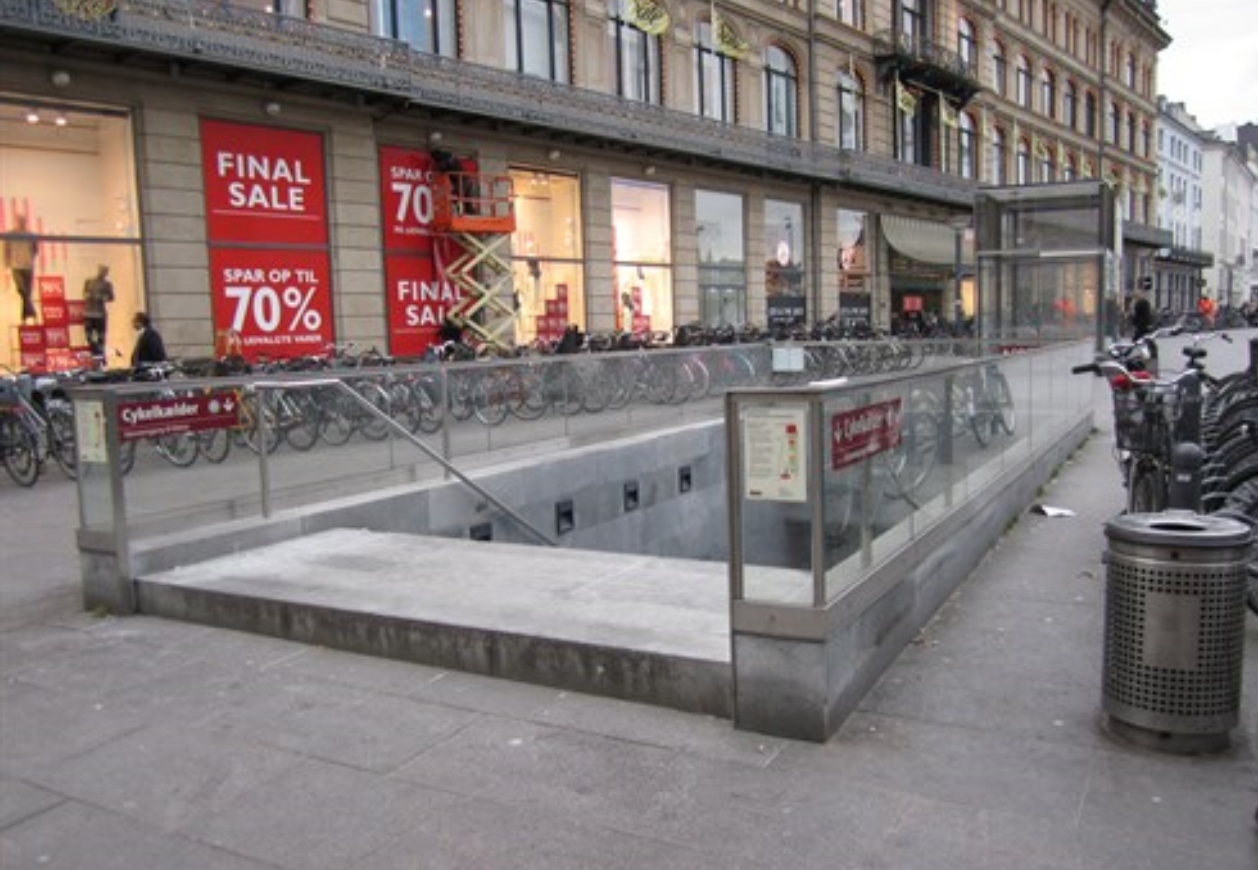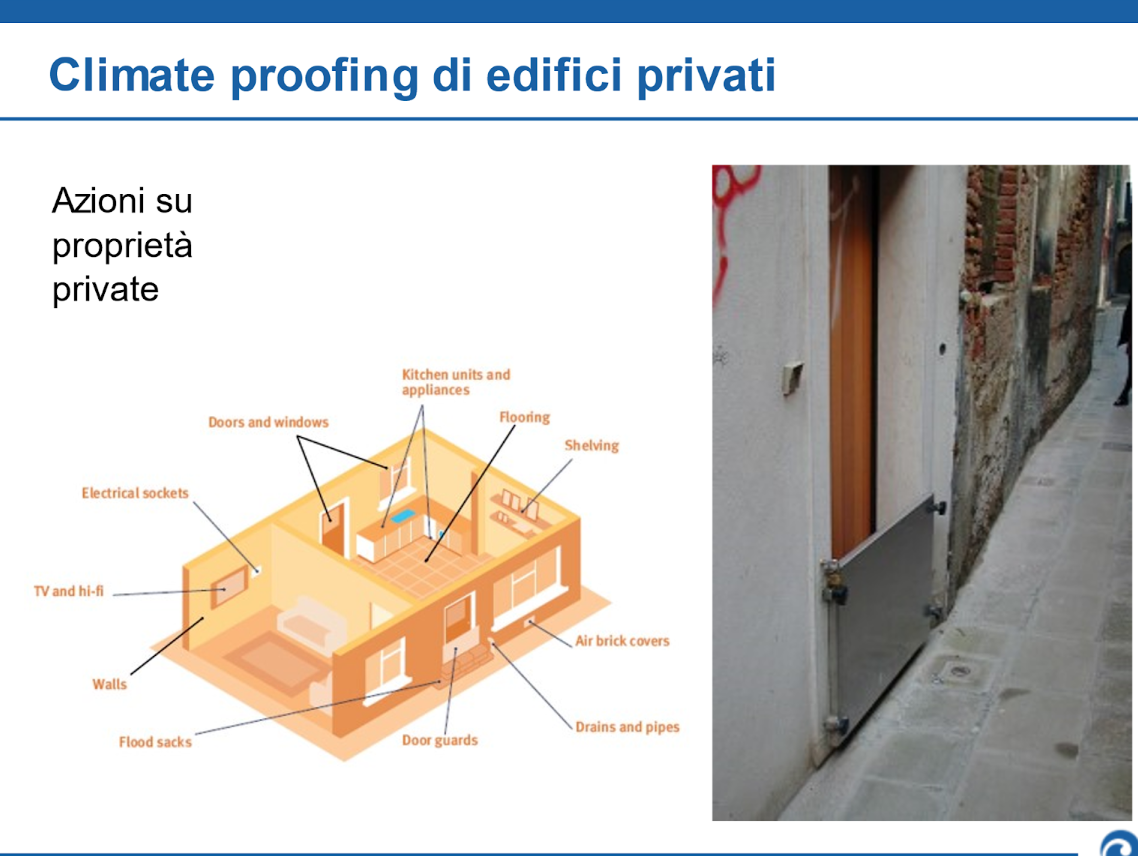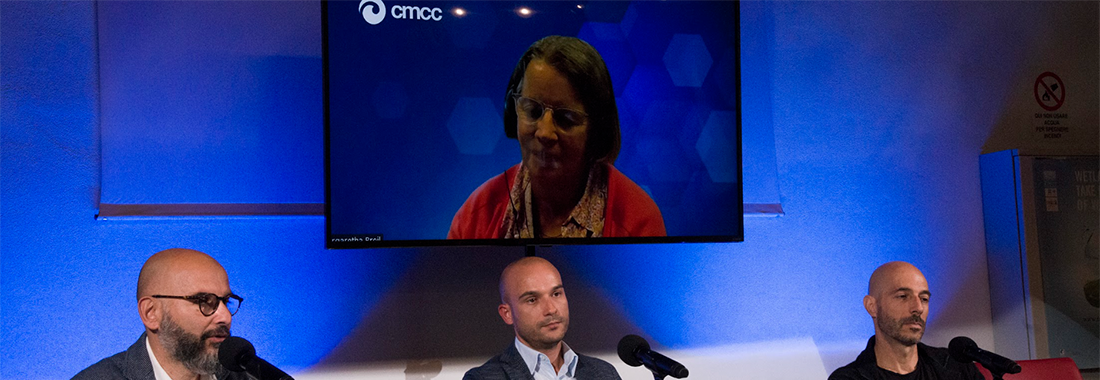During Blue Waves, the MEDSEA event on the circular economy for the sea and the environment in Sardinia, this year dedicated to climate change and the possibilities of adaptation for territories and businesses, Margaretha Breil, urban planner expert in climate change from CMCC, Euro-Mediterranean Center for Climate Change, spoke.
Watch the video:
The Mediterranean basin, as we have seen, "warms up much faster than other seas, - explains Breil - resulting in excessive energy accumulation phenomena which, in contact with the atmosphere, lead to water bomb" or heavy rainfall: the theme is therefore how to quickly and efficiently collect water in these moments, considering the decrease in rainfall and, on the theme of agriculture, that constantly needs water to irrigate ".
“The trends are pretty clear for the next 20 years. We can hope that the global policies for cutting climate-altering gas emissions (CO2, methane ...) will change the course of events - explains the expert - but if this does not happen, we could trigger an irreversible trend that will lead to much higher temperatures. This will change the appearance not only of Sardinia, but of the whole Mediterranean and the rest of the world”. See the latest data from the IPCC, the intergovernmental panel that monitors climate change.
The summer of 2022 already brought the signs of this change evident, with an average of 2 ° above the average recorded in Italy, heat waves and tropical nights with little or no temperature range between day and night, with an annual estimate of + 25% of the mortality of the elderly in Italy this year, according to the data reported by the Italian Ministry of Health.
On the possible adaptation measures already in use, in addition to the need, if not the obligation, to reduce CO2 emissions as much as possible: the "gray" infrastructures - protective infrastructures, such as the Thames Barriers that are located in London to stem floods of the Thames; the "green and blue" ones concerning urban, rural and marine reforestation; the "soft" ones concerning the recommendations and precautions to the population; those “climate proofing” which should concern all new infrastructures in order to consider the levels of resistance to extreme events, such as floods. An example of infrastructure designed to withstand climate change is Copenhagen city, which has built a step for accessing the underground metro station and has created neighborhoods resilient to climate change since 2014, such as the Østerbro Climate Resilient Neighborhood project.

Author and source: Metroselskabet
At the level of private infrastructures, waterproof walls, doors and safety bars at the entrance to prevent water access, as well as the design of sockets and electrical appliances in the upper part of the house, are certainly effective and accessible solutions for all to adapt to climate change.

Latest news

TransformAr Open Day in Marceddì: Marshes and Lagoons to Reimagine the Future
Natural Solutions to Adapt to Climate Change: Lagoons and Marshes. This topic was discussed during an immersive walk between the Marceddì Lagoon and the San Giovanni Marsh on Friday, July…

MEDSEA joined the Natural Heritage Interreg Euro-MED Mission in Rovinj for aligning in projects' Communication
MEDSEA stopped in Rovinj, Croatia, from June 26th to 27th, 2024, to participate in the Communication, Amplification and Policy activities of the Interreg Euro-MED Natural Heritage mission, which brings together the thematic projects…

DesirMED: Nature-Based Solutions for Climate Adaptation, Regional Comparison at the Mid-Year Assembl
The DesirMED project recently held its General Assembly online on June 19 and 20 to review the progress of activities in the first semester. This meeting saw the participation of all scientific partners and…

Waste Hunt at Sella del Diavolo to Protect our Cetaceans Friends
Last Saturday on June 15th, nearly a ton of waste was recovered both on land and at sea during the "Puliamo la Sella!" event in Cagliari. The collected items included…

Active Restoration of Posidonia oceanica: MEDSEA at the 2024 World Seagrass Conference in Naples
MEDSEA continues to lead in the active restoration of Posidonia oceanica, a crucial topic for the conservation of Mediterranean marine ecosystems. Recently, the guide "Guidelines for the Active Restoration of Posidonia oceanica"

TransformAr Open Day on July 5th 2024: Discovering Transformative Solutions for Climate Change at the Marceddì Lagoon
On July 5th, TransformAr presents itself to the public with a special Open Day. The European Horizon 2020 project, aimed at developing transformative solutions for climate change adaptation, invites curious minds and citizens…

Puliamo la Sella! 2024 dedicated to our cetacean friends, with WWF, returns to Cagliari on June 15, 2024
The coastal cleanup organized by the MEDSEA Foundation, Puliamo la Sella!, returns to Cagliari on June 15th 2024. This year's event, now in its sixth edition, will be a special…

Deep Dive: The Talk for World Oceans Day
World Oceans Day provided an opportunity to reaffirm the importance of acting now to protect one of our most precious assets: the marine and coastal ecosystem. The Coalitions of the…
First SEG Meeting of the BLUE4ALL Project: A Focus on Surveillance and Biodiversity Protection
On May 23, 2024, the inaugural SEG (Stakeholder Engagement Group) meeting for the BLUE4ALL Project was held at Casa Todde in Villasimius, with options for remote participation.

RICREA introduces itself in Lucca, working on updating the Contracts, and will also focus on the Blue Crab
River, lagoon, and water body contracts in general are an exceptional tool for sustainable and participative environmental management, essential for the protection of water resources and local biodiversity. However, there…

TransformAr: Climate Adaptation Pathways Finalized for the Fisheries and Agriculture Sector in Terralba
This week, a participatory workshop was held in Terralba as part of the TransformAr project to finalise the adaptation pathways developed with local operators, particularly in the fisheries, agriculture, and biodiversity sectors.

ARTEMIS, Partner Meeting in Marseille to Kick Off Activities
On May 15th and 16th, at the Plan Bleu headquarters in Marseille, the first in-person meeting of the ARTEMIS project was held since the kickoff in March. ARTEMIS is a project within the…

DEEP DIVE: The Alarming State of the Ocean – Inspiring Action and Searching for Solutions (Webinar)
In celebration of World Ocean Day, MEDSEA invites you to the online event "Deep Dive: The Alarming State of the Ocean", a detailed analysis of the challenges that oceans are…

Fire Monitoring Test successfully conducted in Santu Lussurgiu thanks to IoT Technologies
At the end of April, a major breakthrough in fire prevention technology was achieved in the forests of San Leonardo. Thanks to pre-fire detection sensors, an IoT (Internet of Things) technology developed and…

REST COAST, at the annual meeting in Groningen, demonstrates the effectiveness of natural restoration of aquatic systems
The standstill of the Nature Restoration Law, the European law on nature restoration, stalled in its final approval phase in the Council due to the hesitations of some Member States, has…

TransformAr makes a stop in Finland for the sixth Consortium Meeting
In mid-April, the sixth Consortium meeting of the H2020 TransformAr Project was held in Lappeenranta, recognized as the Climate Capital of Finland. This city truly exemplifies sustainability, with 100% of waste recycled and all…
- 1
- 2
- 3
- 4



